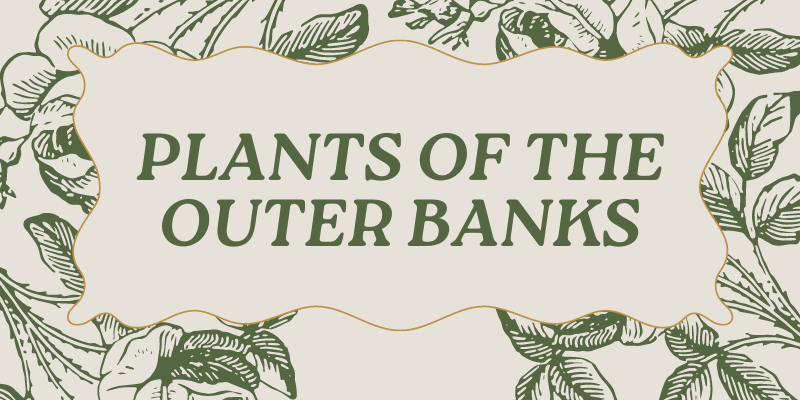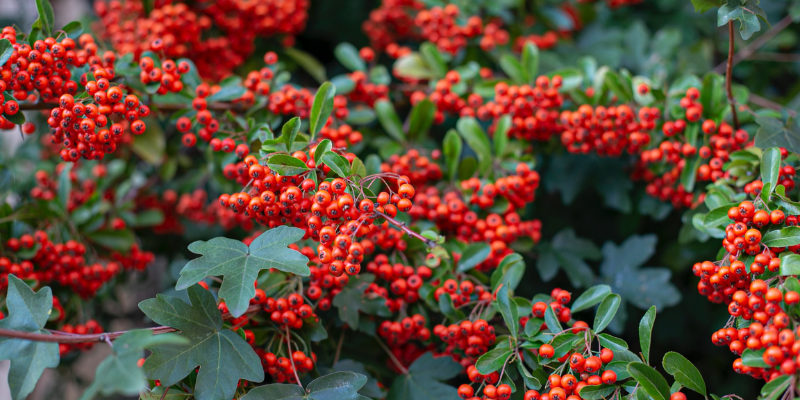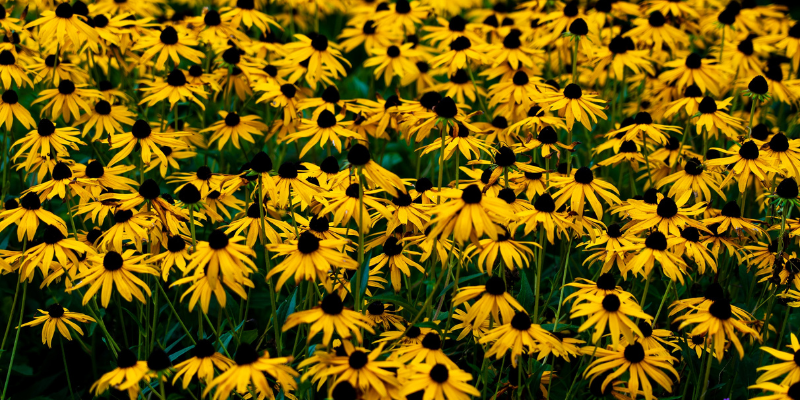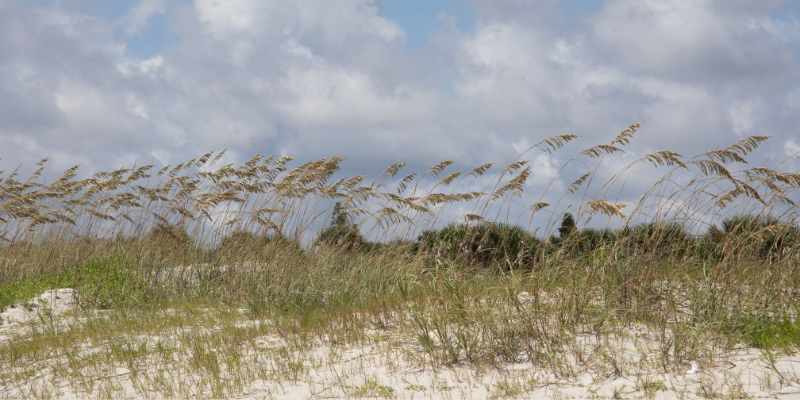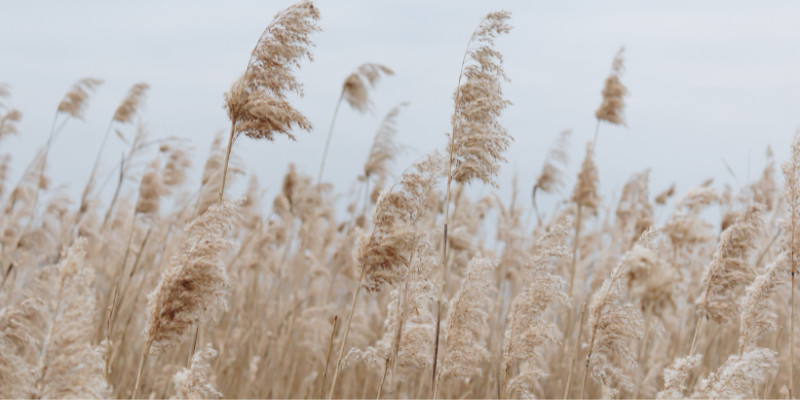Have you ever been driving around the Outer Banks or exploring one of our maritime forests and wondered what kinds of plant life you were seeing? Below you'll find a list of the many different types of plants that you'll find on the Outer Banks, some native and others invasive. Keep reading so that you'll be able to identify and name some of the most common fauna on the Outer Banks on your next OBX vacation adventure!
Outer Banks Trees
American Holly
(Ilex opaca)
These large, beautiful holly trees can grow up to 60ft tall in the right conditions. They're known for their dull leaves and small white flowers that eventually grow into the famous red berries.
Yaupon
(Ilex vomitoria)
This evergreen tree known for its bright red berries is famous in historic circles for the tea that used to be brewed by Indigenous societies and colonial North Carolinians (not that we suggest anyone try it). These trees grow along the coast and can be as tall as 30ft in the right conditions.
Inkberry
(Ilex aquifolium)
This plant, also known as the English Holly or Christmas Holly, is the bright green and red foliage that we think of when Christmas comes around. It can grow up to around 10 or 15 feet and it is easily identified by its shiny, point green leaves.
Dahoon
(Ilex cassine)
This native holly plant is resistant to the salt coming off the ocean but does not handle cold weather very well. Dahoon looks similar to Christmas Holly (despite sounding like a planet in Star Wars) but with larger berries rounded leaves.
Southern Red Oak
(Quercus falcata)
This native oak has two different types of leaves, both with bright green tops and soft, tan bottoms, and acorns that take up to two years to mature. They're extremely drought resistant and can grow to be up to 100ft tall. Other oaks that can be found on the Outer Banks are the Bay Live Oak, the Swamp Chestnut Oak, and the White Oak.
Partridgeberry
(Mitchella repens)
This evergreen creeping shrub thrives in wet forests and can be identified by its small, tawny flowers. It also produces tiny red berries with star-shaped markings.
Southern Wax Myrtle
(Myrica cerifera)
The Southern Wax Myrtle is a beautiful shrub that can grow up to 20ft tall with bright green leaves and a strong, aromatic smell. It produces blue berries and has gray to white bark.
Outer Banks Flowers
Narrowleaf Silkgrass
(Pityopsis graminifolia)
Commonly found in Florida and other warm, coastal states, you'll also find these bright yellow flowers up and down the Outer Banks. Their leaves are usually silver and they can grown up to two and a half feet tall.
Black-Eyed Susan
(Rudbeckia hirta)
Black-Eyed Susans are bright wildflowers that grow up to two feet tall with bright yellow flowers. The centers of these flowers are dark brown or black, giving them their name, and they are known to attract birds and butterflies.
Coral Honeysuckle
(Lonicera sempervirens)
For visitors from other southern states, honeysuckles won't be anything new. But these beautiful, pink honeysuckles can grow on vines up to 20ft long and are perfect for attracting humingbirds.
Crossvine
(Bignonia capreolata L.)
These orange and yellow flowers grow on long vines that can reach lengths of 50ft. The trumpet-shaped flowers usually bring in butterflies, hmmingbirds, and deer.
Outer Banks Weeds, Vines, & Grasses
Seaside Goldenrod
(Solidago sempervivens)
Seaside Goldenrod is a spring-flowering plant that can grow anywhere from 2-8ft tall. When it flowers in the spring, these plants are bright yellow and they are resistant to ocean sea spray.
American Beach Grass
(Ammophila breviligulata)
American Beach Grass is the name for the green grasses that you'll find throughout the dunes on the Outer Banks. With roots nearly 20ft deep beneath the dunes, these plants are an important part of the Outer Banks ecosystem as they often hold the sand dunes together.
Muhly Grass
(Muhlenbergia capillaris)
Easily identifiable by the bright, pink tufts of grass that flower in the late spring, Muhly Grass is a native North Carolina plant that can grow up to 4ft tall.
Blue Grama Grass
(Bouteloua gracilis)
These native grasses has very thin leaves and only grow to be about a foot tall. When they're not flowering, they'll appear yellow and tan.
Little Bluestem
(Schuzachyrium scoparium)
Much like Blue Grama, Little Bluestem are small green grasses that grow in patches and are create for preventing erosion of the dunes. They flower during the late spring and su,mer and grow 2-4 feet tall.
Lemon Grass
(Cymbopogon citratus)
If you eat a lot of Thai, Vietnamese, or Japanese cuisine, there's a chance you're already familiar with Lemon Grass! This bright green grass, that is wonderful as a tea or for adding extra flavor to a dish, also can help prevent dune erosion and creates a wonderful, relaxing sounds when the wind blows!
Mondo Grass
(Ophiopogon intermedius)
These thick, ornamental grasses produce distinct, bright blue berries between July and September and are great for reducing dune erosion. Mondo Grass can grow up to about a foot and a half in height.
Purple Fountain Grass
(Cenchrus setaceus)
While there is a good chance that you'll see Purple Fountain Grass along the Outer Banks, this plant is actually not native to the area. It can grow up to 4ft tall and grows in visually stunning maroon mounds.
Sea Oats
(Uniola paniculata)
These distinct ornamental grasses flower in the warmer weather and are essential for protecting the dunes from erosion. Sea Oats can grow up to six feet tall and when their seeds brown at the end of the summer season, they are known to be used for coastal decoration.
Switch Grass
(Panicum virgatum)
Another flowering grass, Switch Grass is also known as Panic Grass and is native to North Carolina. When in bloom during the late summer, the bright purple seed heads can reach 7ft tall.
Seabeach Amaranth
(Amaranthus pumilus)
This beautiful beach grass is federally protected and grows near to the ground. During the summer into late September, these plants produce tiny yellow and pink flowers that are easily dispersed during coastal storms.
Saltmeadow Cordgrass
(Spartina patens)
These grasses are usually found in brackish and slatwater marshes. They produce small, white flowers during April and May and they grow in tiny clusters along the waterline.
Largeleaf Pennywort
(Hydrocotyle bonariensis)
Leargeleaf Pennywort look almost like tiny lilly pads and grow primarily in the sand near brackish or salt waters. They produce pink flowers in the spring and summer and grow to be about 10 inches tall.
Dune Prickly-Pear
(Opuntia pusilla)
While cactuses may not be the first thing you think of when you think about plants on the Outer Banks, the Dune Prickly-Pear Cactus is a common OBX plant that grows best in sandy environments. They have aggressive spines with thick, cylindrical skins.
American Beauty-berry
(Callicarpa americana L.)
The American Beauty-berry is a flowering, coastal plant that can grow up to 9ft tall. The seeds of the bright purple fruit are important for local wildlife including birds and deer.
Invasive Plant Species
An invasive plant species is one that is not native to an area and whose presence is generally disruptive to the local ecosystem. There’s a good chance that you’ll see many of these plant species up and down the Outer Banks during your stay, but that does not mean that they grow naturally to the area. You can learn more about invasive species in Dare County here and here.
English Ivy
(Hedera Helix)
English Ivy is commonly used to add additional decoration to a carefully-curated landscape, but when uncontrolled, it quickly eliminates native flowers and other vines.
Pampas Grass
(Cortaderia selloana)
While it’s relatively common to see Pampas Grass adorning homes around the Outer Banks, this ornamental grass is not indigenous to North Carolina and actually originated in South America. The blades of this grass are very sharp and can cut you if you’re not careful. Pampas Grass is also invasive and is known for taking nutrients, sun, and space from surrounding native plants.
Russian/Thorny Olive
(Elaeagnus angustifolia)
Russian Olive is a shrub-like plant that spreads quickly when provided the correct environment and is easily spread by birds, making it invasive and damaging to the local environment. People tend to still purchase Russian Olive for decorative purposes, but it is not native to the area.
Alligatorweed
(Alternanthera philoxedroides)
Alligatorweed is a flowering plant that is unfortunately common in marshes and canals. It grows swiftly and can form thick blankets of greenery that damage boats and cause problems for swimming and fishing.
Kudzu
(Pueraria montana)
Now generally considered an inherent part of the southern landscape, this perennial vine is native to Japan and was brought to the United States in the late 1880s as an ornamental plant. And while it was once used to prevent soil erosion, the reality is that these vines tend to be extremely destructive to any surrounding plants.
Chinese Privet
(Ligustrum sinense)
These plants are shrubs and evergreen plants that are often planted as hedges. They’ve become an issue for the local ecosystem by preventing light from reaching native low-lying plants when their seeds are spread by birds.
Tree-of-Heaven
(Ailanthus altissima)
This deciduous tree that looks kind of like a fern with tiny white flowers is damaging for the local ecosystem as it overruns local North Carolina plants and actually leaks a chemical into the soil that kills surrounding plants, eliminating competition for resources.
Common Reed
(Phragmites australis)
While there are reeds that are native to North Carolina and the rest of the United States, European versions of the reed tend to crowd out native species. These plants tend to have colorful flowers and are believed to have been transported to the US in the 1800s.
The Challenge of Gardening on the Outer Banks
If you’re curious about the different types of plants that grow well on the Outer Banks or how to go about starting a garden on the Outer Banks, check out this video from the Dare County Master Gardeners!
Book Your Awesome Outer Banks Vacation Now!
Check out our available rentals and book your next Outer Banks vacation today! Enjoy the chance to explore the flora and fauna of the beautiful Outer Banks. And while you're here, take a look at our guides to Outer Banks Birdwatching, Ghost Crabbing on the Outer Banks, and 10 Inexpensive Outer Banks Vacation Activities. There's so many wonderful ways to enjoy nature on the Outer Banks! So be sure to book your next stay today! We can't wait to see you at the beach!

About the Author: Lauren is a mom, author, and travel enthusiast. She grew up on the Outer Banks and only left for a few years to get her degree at UNC-Chapel Hill and complete a tour in the Coast Guard before making her way back to the beach in 2017. When she isn’t writing for the Seaside Vacations Travel Blog, Lauren can usually be found with a book and cup of tea in hand, planning her next travel adventure.

